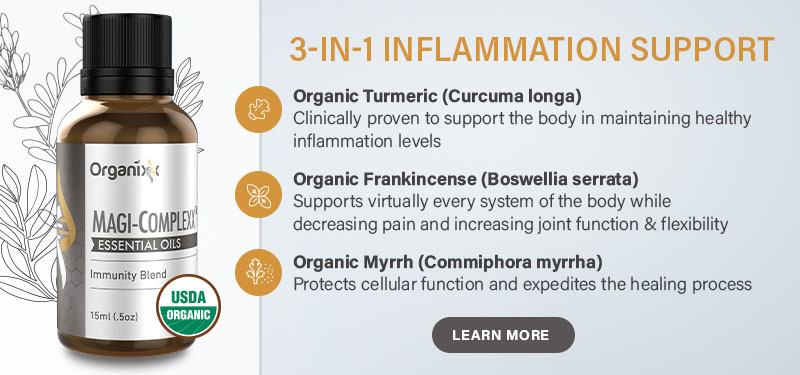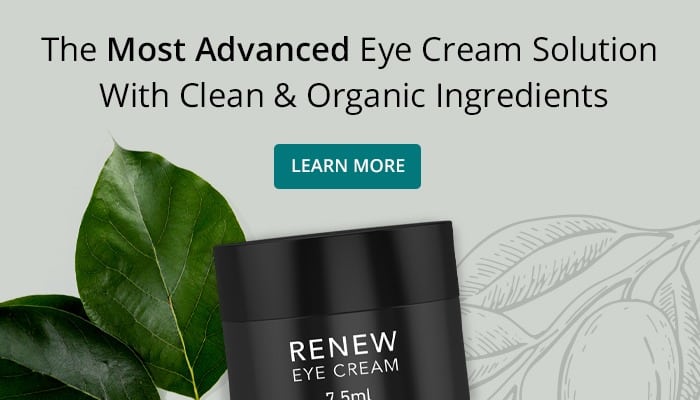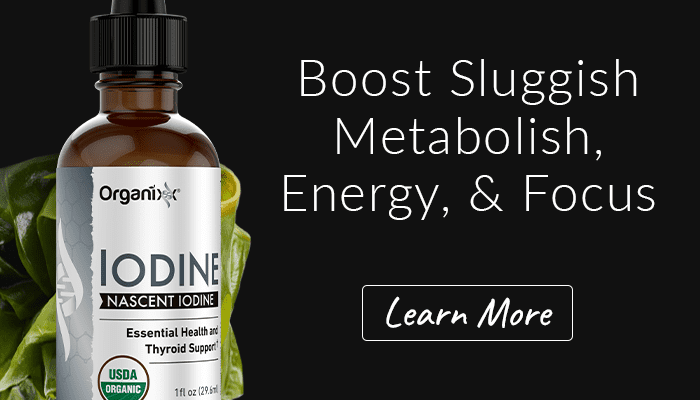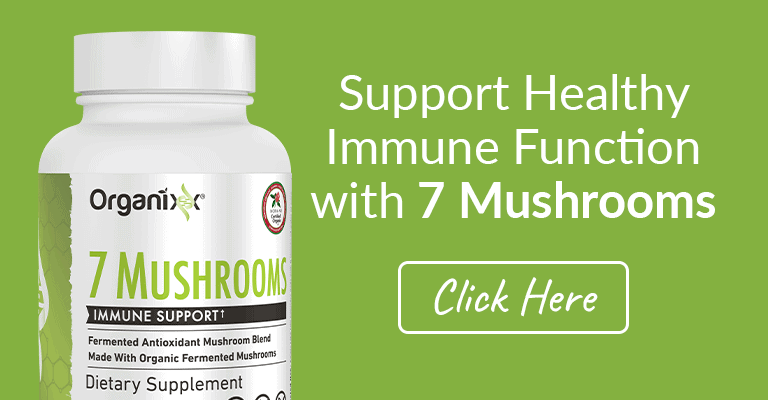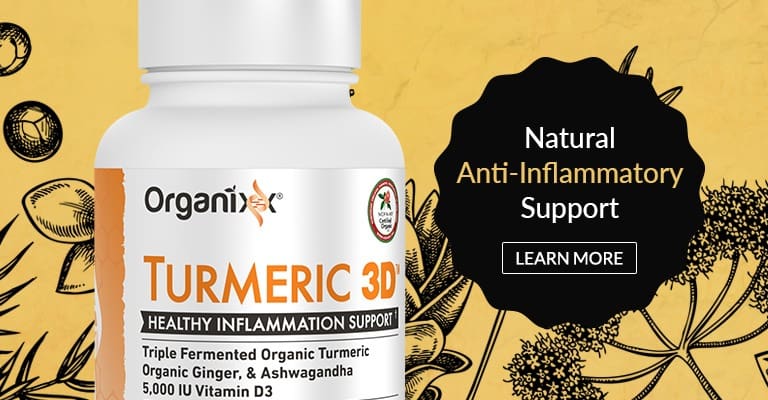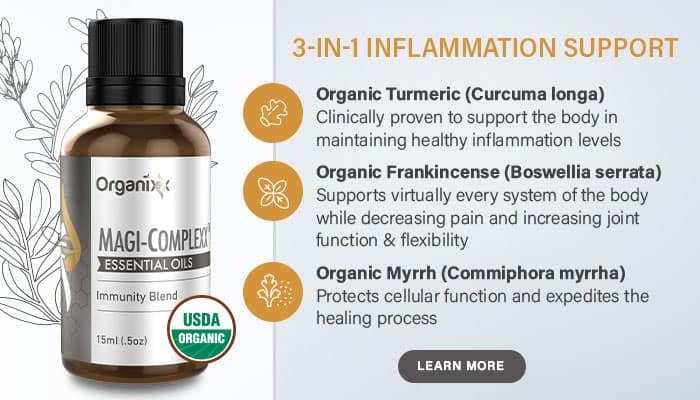You’ve probably heard of the health benefits of honey, both for internal use (i.e., as a food/sweetener) and for external use. While using organic, local honey for skin can be healing on many levels, studies and experts alike say that nothing compares to a special kind of bee product called manuka honey. The list of benefits and uses of manuka honey for skin is legendary, ranging from moisturizing troubled skin to smoothing out wrinkles.
What Is Manuka Honey and Where Does it Come From?
Honey has been used for centuries as a tonic. And since at least the late 19th century, it has been used as a natural antibacterial, anti-inflammatory, and pain reliever [1].
Of course, all honey differs significantly in potency and nutritional content as well as in terms of flavor, texture, and consistency. Differences depend on a whole host of factors, including which vegetation bees pollinate, which type of bees do the pollinating, the geographical region and climate, and more.

Manuka honey comes from New Zealand and Australia and is harvested from bees that pollinate the manuka bush. Some people call this bush “tea tree,” which can lead to some confusion.
Melaleuca vs Manuka
The “manuka tea tree” is different than the tea tree that is commonly known in the West for producing tea tree essential oil. There are some similarities between the two, however. Tea tree essential oil comes from the Melaleuca alternifolia plant and is native to Australia’s northeast coast. It is used in aromatherapy and as a powerful antifungal.
On the other hand, manuka’s Latin name is Leptospermum scoparium and this tree is native to New Zealand. It too is sometimes made into an oil or tincture.
Some experts say that in this form it is more powerful as an antifungal than even the melaleuca tea tree. Manuka essential oil has also been used by the Maori people for centuries for migraines, to balance mood, for insect bites, and to soothe aching muscles and joints [2].
The Science Behind Manuka Honey Benefits
Of course, manuka is best known for its use as a honey. In this capacity, it is a powerful substance for all the conditions listed above, and so much more.

Besides containing all the beneficial phytonutrients, vitamins, and minerals that regular organic honey has, manuka also contains some components that set it apart from the others.
Most honey has antibacterial properties. Manuka, however, is said to be the most potent honey in this regard. There are a few reasons for this.
It is the presence of natural hydrogen peroxide which gives many varieties of honey their general natural antibacterial properties. Manuka contains specific enzymes that help to boost hydrogen peroxide levels as well as levels of two other phenols, methylglyoxal (a derivative of pyruvic acid) and the saccharide dihydroxyacetone.
Researchers at the University of Waikato in New Zealand have done a lot to help us understand the unique properties of manuka and its powerful effects for health [3]. Due in part to their investigations, there is now a specific way to measure the potency of each manuka batch.
The Higher the UMF, the More Potent the Honey
The “Unique Manuka Factor” or UMF, is based on levels of methylglyoxal, dihydroxyacetone, and hydrogen peroxide within a honey as well as other substances that are unique to manuka, such as Leptosperin [4].
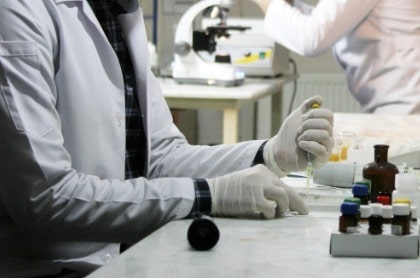
Not all manuka flowers will produce honey that contains these powerful healing substances in significant quantities. Those that do not will have a UMF level of 0 to 4 and can be sold as a consumable. UMF levels of 4 through 14 will have some general health and anti-bacterial benefits associated with them that will become stronger as the number goes up.
Manuka honey varieties with a level 15 and above are considered very therapeutic. Most experts suggest that a person taking manuka honey of 15+ take no more than one tablespoon at a time to reap the most benefits.
By the way, another way to “grade” manuka for its beneficial effects is a “KFactor.” This was created by New Zealand honey processor and manufacturer Wedderspoon. KFactors go up just as UMF numbers do. For example, a KFactor of 22 means that the variety is made up of 90% manuka pollen grains.
Why is there so much fuss regarding manuka purity? Manuka is known as the world’s most expensive honey and having strict guidelines ensures potency and purity and helps to alleviate knock-off or counterfeit brands. This is important because for years individuals have used manuka honey for specific conditions, as we shall see.
Manuka Honey for Gut Health and More
As mentioned above, manuka directly affects inflammation levels and bacterial overgrowth. Because of this, the list of manuka honey uses and the conditions and situations that may potentially benefit from it is long.

First of all, it can be very beneficial for the gut when taken internally. Some studies have indicated that manuka honey can help with the condition known as SIBO (small intestine bacterial overgrowth), acid reflux, and low stomach acid conditions.
This is because manuka honey can inhibit the growth of certain pathogenic bacteria in both the upper and lower gastrointestinal tract (GI). One 2013 study found that therapeutic grade manuka honey can help to inhibit Clostridium difficile, a pathogenic bacterium known to play a part in many digestive disorders [5].
Other Manuka Honey Health Benefits
Other internal health conditions manuka is reported to help with include:
- Staph infections (e.g., MRSA)
- Oral disorders such as gingivitis and tooth decay
- Immune suppressive and inflammatory conditions
- Allergies
- Sleep disorders (through promoting melatonin release) [6].
Research also indicates that therapeutic grade manuka can even be beneficial for patients with the genetic disorder cystic fibrosis. Manuka can help to lower levels of certain bacteria that can be problematic for these patients [7].
Manuka Honey Benefits for Skin

One of the most well-known benefits of manuka is skin health. Again, this is due in large part to the anti-bacterial characteristics of high-UMF honey.
According to a 2016 study published in the Central Asian Journal of Global Health [7], manuka can provide significant relief for individuals who suffer from:
- Eczema
- Acne
- Milia
- Dermatitis
- Ringworm
- Burns
- Lacerations and other wounds
Manuka Honey Skin Care
It makes sense, therefore, that this best honey for skin care can be found in skin creams, lotions, body butters, and even manuka honey face masks and eye masks.
It is also especially prevalent in high-quality face and eye creams and there is a good reason for this. Manuka honey can be extremely moisturizing because its chemical properties help to draw moisture to your face. In addition, it contains vitamins A, B, C, D, E, and K as well as heavy-duty antioxidants, beta-carotene, and enzymes.
Manuka works with the skin’s healing mechanisms to repair cells in all skin types. This can provide welcome relief from dry, chapped skin, can help to smooth out wrinkles, and even help prevent premature aging.
There you have it… all the basics you need to know to include manuka honey as a premiere go-to for overall health, including the health of your skin and face. Manuka is a proven ingredient to help your natural beauty shine through. Its sweet-smelling, purifying, and soothing properties can repair, calm, soothe, and beautify!
Did you know that manuka honey is just one of the high-quality, natural ingredients included in Organixx Skin: Renew Eye Cream.
Looking for an all-natural, toxin-free eye cream that can reduce wrinkles, nourish skin from the inside out, and help keep you looking young… longer? Introducing Renew Eye Cream – the most powerful and synergistic all-natural eye cream on the planet!
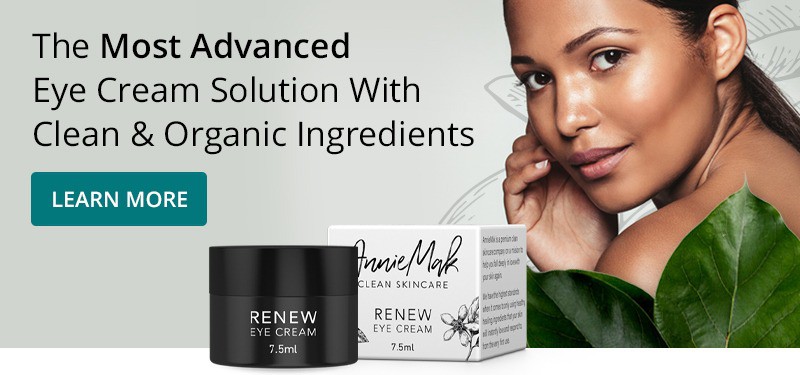
The American Thyroid Association states that about 20 million Americans live with hypothyroidism, but the majority actually have a condition called Hashimoto’s thyroiditis [1]. This means about 14 million Americans are living with Hashimoto’s [2].
Have you or someone you loved received a Hashimoto’s thyroiditis diagnosis? Let’s explore what this condition is and important considerations along your Hashimoto’s healing journey.
What Is Hashimoto’s Thyroiditis?
Hashimoto’s thyroiditis, also known as chronic lymphocytic thyroiditis, is an autoimmune condition with a whole laundry list of related symptoms. Although hypothyroidism is the most common, it is just one of many symptoms of Hashimoto’s [3].
Autoimmune conditions are characterized by immune system malfunctions. In most cases, antibodies are produced which “seek out” otherwise normal mechanisms in the body, destroying them and preventing them from doing their job [4].
The basic cause of Hashimoto’s is an imbalance in the function of not only the thyroid but also the pituitary and the hypothalamus caused by the autoimmune response [5].
The Impact on Gland Communication & Hormone Production
Here’s how it works: the immune system produces antibodies (thyroid peroxidase antibodies are the most common) which interrupt chemical signaling between the pituitary, the hypothalamus, and the thyroid.
Correct communication between these three glands is vital in order to ultimately produce thyroid hormones. These hormones then go on to affect hundreds of other functions throughout the body.
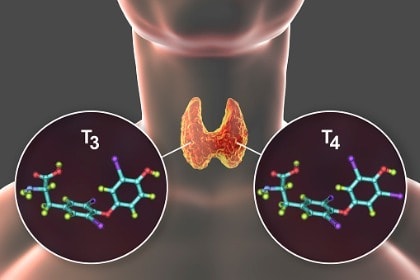
Part of the job of the pituitary gland is to produce a substance called “thyroid stimulating hormone,” or TSH. TSH’s role is to stimulate the thyroid gland into producing the thyroid hormone thyroxine (T4) as well as the metabolic hormone triiodothyronine (T3).
When Hashimoto’s mechanisms are at play, immune system antibodies intercept TSH signals before they have a chance to reach the thyroid [6].
The result is an overabundance of TSH in the bloodstream. Because the thyroid never “gets the message,” most of the time there is low thyroid production as well.
Hashimoto’s Symptoms Checklist
Some common symptoms of Hashimoto’s include:
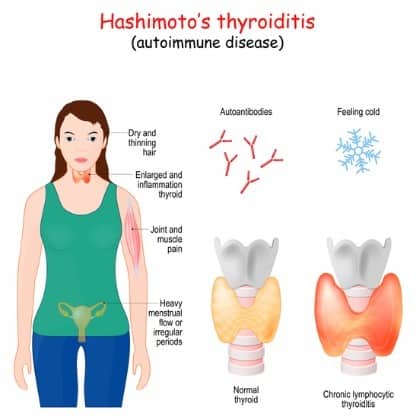
- fatigue
- sluggishness
- dry skin
- puffiness
- constipation
- muscle weakness
- joint pain
- hair loss
- brittle nails
- excessive menstrual bleeding
- anxiety and/or depression
- heart palpitations
- cognitive decline
- loss of memory
In addition, other conditions may develop if Hashimoto’s goes on for too long untreated.
3 Conditions Related to Hashimoto’s
1. Hashimoto’s encephalopathy
Hashimoto’s encephalopathy is a neurological condition. It’s characterized by confusion, psychosis, paranoia, seizures, muscle twitches and jerks, hallucinations, and sometimes coma [7].
2. Goiter
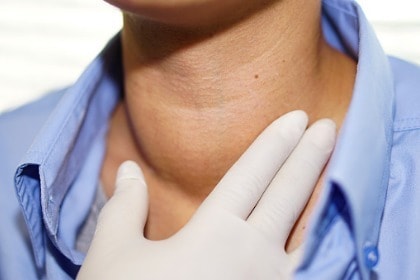
Goiter is an enlargement of the thyroid gland, either through inflammation or as a result of a nodule. It is usually visual as a lump on the front of the neck [8].
Goiter is serious because individuals with goiter may be more likely to experience a thyroid storm or “thyrotoxicosis crisis.” This is when thyroid hormone levels jump dramatically. Thyroid storm can be life-threatening if not stabilized quickly [9].
3. Hyperthyroidism
Surprisingly, at times Hashimoto’s suffers may experience the symptoms of hyperthyroidism too. Dr. Izabella Wentz is a well-known expert on Hashimoto’s who has struggled with the disease herself. [Note: Hypothyroidism is an underactive thyroid while hyperthyroidism has to do with overproduction of thyroid hormones.]
“People with Hashimoto’s may experience BOTH hypothyroid and hyperthyroid symptoms because as the thyroid cells are destroyed, stored hormones are released into the circulation causing a toxic level of thyroid hormone in the body, also known as thyrotoxicosis or Hashitoxicosis,” says Wentz.
“Eventually, the stored thyroid may become depleted and due to thyroid cell damage, the person is no longer able to produce enough hormones. At this time, hypothyroidism develops [10].”
How Do You Get a Hashimoto’s Thyroiditis Diagnosis?

Besides relying on the wide range of symptoms, most people are presented with a Hashimoto’s thyroiditis diagnosis through a blood test which detects high TSH as well as the presence of thyroid antibodies.
Conventional Hashimoto’s Treatment
When it comes to autoimmune disease in general, many physicians simply say that they don’t know what causes it or that it’s a matter of “bad genes.” Many still feel that diet and lifestyle have nothing to do with it and that autoimmune diseases cannot be reversed.
They will often recommend prescription drugs, including low-dose chemo drugs, that focus on shutting down part the part of the immune system or reducing symptoms [11].
In the case of a Hashimoto’s thyroiditis diagnosis, the majority of Western doctors will prescribe pharmaceutical thyroid replacements such as Levothyroxine [12].
Unfortunately, thyroid medications will not fix the underlying autoimmune condition. There’s also the concern that all pharmaceuticals come with a list of at least some potential side effects.
For example, there are some scary ramifications to long-term thyroid replacement use. As far back as 1976, a study published in the Journal of the American Medical Association (JAMA) found a 200% increase in breast cancer incidence amongst women who had been on thyroid hormone replacement for at least 15 years, compared to women who were not on the drug [13].
The Link Between Breast Cancer and Thyroid Conditions
Several more recent studies have investigated the link between thyroid disorders and breast cancer. This growing body of evidence shows that breast cancer patients are more likely to also have a thyroid disorder (both autoimmune and non-autoimmune). For example, in one 1996 study, Hashimoto’s thyroiditis was observed in 13.7% breast cancer patients while only 2% of healthy controls had this autoimmune condition [14].

Research has also demonstrated that breast cancer and thyroid cancer are related. A 2016 systematic review and meta-analysis of all relevant studies stated that “There is a clear increase in the odds of developing either thyroid or breast cancer as a secondary malignancy after diagnosis with the other [15].”
The takeaway here should not be fear, but rather an awareness that a health-focused lifestyle is crucial for both a healthy thyroid and breasts.
Lowering Stress, Lifestyle Changes, and Iodine: Finding the Right Hashimoto’s Treatment Protocol
Can Hashimoto’s thyroiditis be reversed? Yes, it can! Thousands have turned Hashimoto’s around through the right kind of diet (including healing the gut and removing gluten), making lifestyle changes, lowering stress, and detoxifying the body.
When it comes to nutrients, iodine is literally the “food” for your thyroid. There are differing opinions, however, as to what role iodine should play in someone healing from Hashimoto’s.
Most in conventional medicine advise against supplementing with iodine. On the other hand, some functional medicine experts state that flooding the body with iodine is the key to healing. While some people do have success with this method, for others, taking megadoses of this essential mineral can make matters worse. This is why it’s critical that you work with a trusted healthcare provider to determine what Hashimoto’s treatment plan is best for you.

Another approach falls somewhere in the middle ground. A 1998 German clinical trial published in the European Journal of Endocrinology found that Hashimoto’s patients who took low doses of iodine (250 micrograms of potassium iodide) for four months saw “slight but significant” improvements in their thyroid hormone function [16].
Other studies point to the importance of including “helpers” for iodine absorption. Research has been conducted on the role selenium, iron, zinc, and thiamin in particular play in iodine synthesis and thyroid healing. For instance, a 2002 study conducted by the Swiss Federal Institute of Technology in Zürich stressed the importance of selenium.
“Adequate selenium nutrition supports efficient thyroid hormone synthesis and metabolism and protects the thyroid gland from damage by excessive iodide exposure,” said the researchers in the journal Thyroid [17].
All of this demonstrates, again, that there is no one clear path when it comes to treating Hashimoto’s thyroiditis. However, there is something that almost everyone can do to improve their thyroid health.
Everyone Can Benefit by Detoxing From Halide Toxins
Iodine is both an element (remember the periodic table in chemistry class?) and an essential mineral that’s critical for proper functioning of every cell in the human body. It’s especially important for the thyroid.

In women, iodine is found most in the thyroid, ovaries, breasts, and uterus. In men, it’s the thyroid followed by the reproductive system and the prostate.
Whether or not you have a diagnosed thyroid condition, your thyroid will not be able to absorb the iodine it needs if you have a high level of halide toxicity. Halides are other elements that can take up iodine receptor sites within the body, preventing iodine from getting where it needs to go.
The main halides to watch out for are:
Fluoride: found in tap water, dental cleansers, toothpastes, and mouthwashes as well as some consumer goods. A large-scale English study discovered that hypothyroidism was two times as high in areas that had fluoridated water versus areas that were not [15].
Bromide: found in swimming pools, indoor paints and plastics, as well as some foods such as commercial bread. Studies have increasingly shown that bromide may be more aggressive at blocking iodine than previously thought [16]. Bromide toxicity has been increasing significantly over recent years.

Chlorine: found in tap water, bleach, swimming pools, hot tubs, and in many kinds of plastics, dyes, and insecticides. If you never thought about the impact chlorine in pools and hot tubs can have on your health, a U.S. Environmental Protection Agency study found that kids who swam regularly in swimming pools were more prone to asthma [20].
Perchlorate: a man-made substance that has many of the same chemical components as naturally occurring halides. It is found in jet fuel and many agricultural fertilizers. A recent study by the University of California, Los Angeles, found that exposure to perchlorate may lead to a higher risk of either Hashimoto’s or Grave’s disease (aka toxic diffuse goiter) [21]. Perchlorate can be found in the bodies of just about everyone on the planet.
3 Steps to Detox From Halides
Halides are easy to eliminate from the body if you know how. The first step is to stay away from as many sources of them as you can. The second step is to get tested. Many labs offer an at-home “iodine loading” test that can also determine if you have high levels of toxic halides.
Finally, the third step is to detox. Work with a qualified healthcare practitioner if your levels are especially high. Eliminating halide sources from your environment and supplementing with a quality source of iodine (when appropriate) can slowly remove them from the body over time as well.
Nascent Iodine Is the Safest Form of Iodine for Hashimoto’s
If you have Hashimoto’s, you need to find a qualified healthcare professional who can help guide your healing. Determine with them if slowly introducing a quality iodine supplement is right for you.
Nascent iodine is the most gentle, safest form of iodine out there since it does not need to be converted in order to be absorbed in the body. It absorbs quickly and at the cellular level.
Organixx Nascent Iodine is organically sourced and does not come from kelp, so it is energy-efficient yet gentle.
If you have a Hashimoto’s thyroiditis diagnosis or other thyroid issues know that there are options for you on your healing path. Be sure to get your iodine and halide toxin levels tested and nourish yourself with essential minerals such as vital nascent iodine ONLY IF recommended by your doctor.
If you are fortunate not to have any thyroid issues currently, keep your thyroid healthy by ensuring you’re consuming enough quality foods with iodine. If you’re supplementing with iodine, make sure it’s the right kind for you.
When your organs are working hard to detoxify, you want the purest form of iodine possible to help them work more efficiently. It only makes sense to use an organic form that’s totally natural and free of chemicals. Organixx Iodine is one of the only formulas that is USDA Certified Organic. It’s a pure, nascent form of iodine which your thyroid can use immediately.
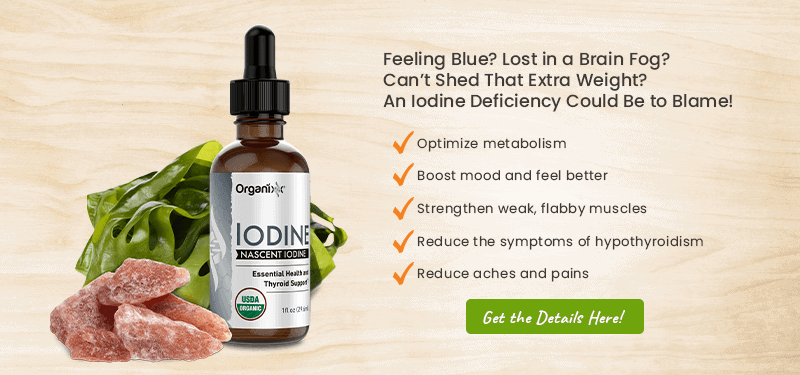
If you’re a follower of health information and trends, you already know there are a myriad of ways to improve your health. You can stop smoking, take high-quality supplements, start a new exercise practice, or eat more nutritious foods. But are you aware that simply by maintaining social connection (i.e., meaningful relationships) in your life you will be setting yourself up for improved longevity and better health?
It should come as no surprise that we humans are innately social creatures. Our connections and relationships with other people give our lives value, relevance, and meaning.
In our relationships we are guided and assisted, entertained, inspired, and supported by the people in our social network. Without social connection, most people will feel lonely and alone in a cold, joyless world.
Lack of Social Relationships Even Increases Your Risk of Death
The knowledge that social connection influences both our health and how long we live is not new. As far back as the 1900s, researchers found that a lack of good social relationships increased the risk of death by at least 50% [1].
A recent study done at the University of South Carolina, Chapel Hill [2], found that a higher degree of social integration was associated with a lower risk of health problems, both early on and later in life.

Conversely, a lack of social connection was associated with vastly elevated inflammation levels of the same magnitude as being physically inactive, at least in adolescence.
In old age, the effect of social isolation increased levels of hypertension and, in fact, exceeded risk factors such as diabetes. And, as one might expect, negative social connections, such as an abusive spouse or a narcissistic parent can actually harm our health.
Loneliness Is Toxic
A 2018 review of medical research conducted at Brigham Young University in Utah [3] confirmed the above study findings – that our social connections with others have a powerful influence on our health and longevity. Researchers even went so far as to state “lacking social connection qualifies as a risk factor for premature mortality.”

Social isolation – not having many, or indeed any, friends upon whom you can rely – is hard on us. In animal research, rats, who are very social creatures, suffer and are stressed when they are kept by themselves in cages.
Loneliness and lack of sociability has been shown to lead to chronic immune, neuroendocrine, and metabolic disorders which can, in turn, lead to cardiovascular problems, tumor growth, and other common age-related diseases. This is such an important topic that the World Health Organization (WHO) now lists “Social Support Networks” as a determinant of health [4].
The Young and the Old Benefit the Most from Social Support
Having and maintaining good social connections is especially important for younger people and for the elderly. For these two age groups, good social connections play more of a vital role in protecting health than it does for adults at mid-life.

People in their 40s and 50s aren’t quite so much at risk, being more naturally involved in multiple social networks including the friends they have cultivated, work colleagues, their children and aging parents, as well as community involvement [5].
Close Relationships Protect Health, Improve Happiness and Longevity
As we age, having a close relationship with a partner or spouse also appears to offer some protection from the problems of aging. Dr. Robert Waldinger is a professor of psychiatry at Harvard Medical School and the fourth director of a decades-long study known as the Harvard Study of Adult Development [6].
Possibly the longest-running study in history, this research was begun in 1938, originally with 268 Harvard sophomores, including John F. Kennedy, who would eventually become America’s 35th president.
The study was later expanded to include a group of boys from Boston’s poorest neighborhoods so that researchers could involve both economically advantaged and disadvantaged individuals. From the original 700 or so original participants, around 60 are still taking part in the ongoing study and are now in their 90s.

The research has (and still continues) to include interviewing the men in person, collecting individual health details, getting brain scans, obtaining blood samples, and asking them questions about their lives, and their mental and emotional health. Their children were/are also interviewed, and video recordings have been made of the men talking with their wives about important concerns. About 10 years ago, the wives of the men were also included in the study.
Strong Relationships Are More Important Than Money & Fame

Although the study is ongoing, according to Dr. Waldinger the results have been quite consistent. Regardless of the jobs these men held, their income status, their social background or upbringing, what made these men happy in their older years were their social connections, much more so than money or fame.
If they were more socially connected to their friends, their family, and their community, they were generally happier, healthier, and lived longer.
Dr. Waldinger also noticed that having a good relationship didn’t just protect the body, it also protected the brain. “Being in a securely attached relationship to another person in your 80s is protective. Those people’s memories stay sharper for longer,” says Dr. Waldinger.
And it didn’t even matter if the people in the relationship bickered constantly – as long as they felt like they could count on one another, the arguments didn’t alter the outcome.
On the other hand, Dr. Waldinger says, “People in relationships who feel that they really can’t count on the other one, those are the people who experience earlier memory decline [7].”

Those who struggled with loneliness had more health problems earlier in their lives, and the more isolated participants had an increasingly rapid onset of brain function decline, felt more physical pain, and they tended to live shorter lives than those who were not lonely.
The other thing that Dr. Waldinger noticed was that those who had conflicted relationships also tended to suffer from ill health. The people in the study who were most satisfied in their relationships around mid-life were also the healthiest at age 80. Even when the elderly participants who were happily partnered had more physical pain, they managed to still feel happy [8].
What Telomeres Tell Us About Good Health & Longevity
Scientists have been looking deeply into what is happening, biochemically, that could be creating this premature aging effect when a person feels stressed, lonely, and disconnected. The answer may very well lie right at the level of our DNA.
In our article “Telomeres and Aging: How Perceived Stress Impacts Your Health,” we shared the research of Dr. Elizabeth Blackburn and her ground-breaking book The Telomere Effect [9].

Dr. Blackburn’s life work has been her study of telomeres, the protective caps that appear on the ends of our chromosomes, and their role in human health. Simply stated, telomeres protect our DNA by keeping genetic material from “unraveling” – a little like the protective plastic tips on shoelace ends.
When telomeres are healthy and well maintained, they’re longer. Cells with longer telomeres are better able to renew, and this has been observed with those in good health. These people tend to feel more energetic and look younger. However, when telomeres are not healthy, they’re shorter, and those with shorter telomeres tend to look older, feel older, and suffer from health problems.
Dr. Blackburn teaches that telomeres act somewhat like canaries in a coal mine – they’re vulnerable to a number of things and their length is an indicator of relative health. Longer telomere length equates to good health and longevity.
What Keeps Telemores Long?
So, what is it that helps to keep our telomeres long, healthy, and well maintained? Quite a few things, actually. Good genetics, as might be expected, because our propensity for having good telomeres can be passed down from our parents. Other factors that help keep telomeres long include:

- having a good attitude
- dealing with stressors effectively
- taking time for meditation and exercise
- avoiding toxic chemicals
- maintaining a healthy weight
- getting good sleep
- eating well
On the other hand, shorter telomeres were found in people who [10]:
- had a negative attitude
- did not manage stress well
- had an abundance of stress about which they could do nothing
- didn’t exercise
- slept poorly
- had toxic chemical contact
- were overweight
- consumed poor-quality food
But What About Telomeres and Social Connection?
Is there a link between telomere length and relationships? Not surprisingly, it has been found that having a good relationship with another person is associated with healthier, longer telomeres.

A 2016 study [11] found that those who were separated or divorced had shorter telomeres than people who were married for a long time. Married people, or people living with a partner, tended to have longer telomeres [12, 13].
Mirroring Dr. Waldinger’s findings that older, happily married couples enjoy better health, a 2013 meta-analysis of over 19,000 people [14] also found that happily married couples had longer telomere lengths.
While time spent with family and friends may not seem glamorous or exciting, it turns out that our good friends and supportive, positive relationships provide us with a lot more than we might realize when it comes to lowering our risk of disease and improving our long-term health!
7 Mushrooms from Organixx contains 7 of nature’s most powerful mushrooms for anti-aging, longevity, and immune support. Using centuries-old knowledge of the power of nutritional mushrooms and our breakthrough new formulation process we’ve unleashed the power of mushrooms in a way never before done.
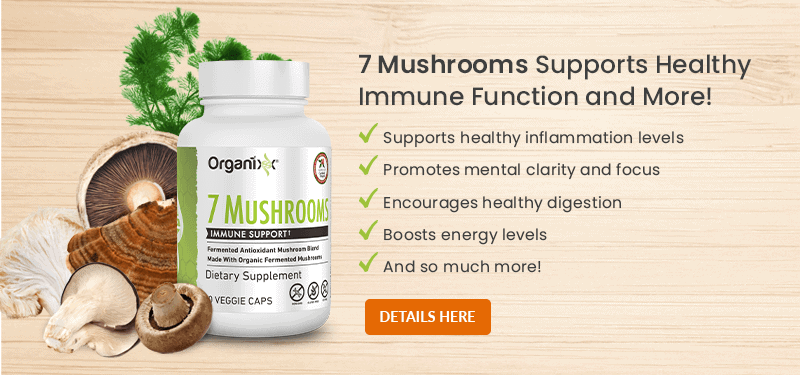
The medicinal herb Andrographis paniculata has been traditionally used for its powerful anti-inflammatory properties and its ability to support immune system activity.
This “king of bitters” (so-called because of its flavor) has been used for centuries in Asia to treat gut and upper respiratory infections, fever, herpes, sore throat, and other chronic and infectious disease conditions [1]. However, modern research is demonstrating Andrographis paniculata’s benefits include aiding with joint conditions such as arthritis and it may even have anti-cancer benefits.
Andrographis Goes by Many Names
Andrographis is cultivated in many tropical Asian countries including India, China, Malaysia, Indonesia, and Sri Lanka, as well as in the West Indies, Brazil, parts of Africa, and Central America.

Known as “chuan-xin-lian” in China, “kalmegh” in India, “senshinren” in Japan, “hempedu bumi” in Malaysia, “fah talai” in Thailand, and “green chiretta” in the Scandinavian countries, Andrographis is listed in the Indian Pharmacopoeia (a publication that lists standards for all drugs that are manufactured, sold, and consumed in India) and in a couple of dozen Ayurvedic formulas [2].
In traditional Chinese medicine (TCM), Andrographis is believed to rid the body of heat (e.g., fevers) and to dispel toxins [3].
Phytochemistry of Andrographis Paniculata
Andrographis leaves are mainly responsible for its biological actions. They contain many bioactive compounds, including diterpene lactones – especially Andrographolide, the main bioactive ingredient that imparts the typical bitter taste.
Andrographolide is an antioxidant that has been shown to be responsible for the herb’s anti-viral and anti-bacterial properties. Andrographolide is also reported in scientific literature to reduce blood clot formation, help protect the liver, have anti-cancer properties, and manage inflammation within safe levels [4].
What Is ParActin®?
ParActin® is a patented extract of A. paniculata, standardized to a fixed concentration of Andrographolide and other related compounds including 14-deoxyandrographolides and neoandrographolides [5].
Preliminary research shows that ParActin® promotes a healthy inflammatory response by blocking a powerful chemical known as NF-kappa B, which is known to be a key regulator of the inflammatory response system.

As a result, ParActin® helps support a healthy and appropriate inflammatory response by reducing the levels of pro-inflammatory compounds that trigger the familiar pain and redness associated with inflammation.
The safety and efficacy of ParActin® has been assessed in more than 30 studies, including laboratory experiments on cultured cells and animal models – and even a human clinical trial.
Let’s take a closer look at some of these studies and what they tell us about Andrographis and ParActin®.
Inflammation Is Linked to Many Disease Conditions
Long-term, chronic inflammation that occurs when the immune system goes into overdrive may lie at the root of many otherwise unrelated diseases, including:
- asthma
- inflammatory bowel disease (IBD)
- rheumatoid arthritis (RA)
- autoimmune diseases
- depression
- cancer
- Alzheimer’s disease

Inflammation – which manifests as swelling, redness, heat, and pain – is a normal response of our immune system and our body’s way of defending us from infections and disease. However, if it’s not managed properly, inflammation can harm the body.
Chronic inflammation is the result of an overactive immune system that is constantly turned on – or cannot be turned off – so that it attacks parts of the very body it is supposed to protect.
So-called oxygenated chemical species – including free radicals, oxygen ions, and peroxides – are continuously made in our body’s cells in response to UV radiation and as byproducts of ongoing metabolic activity. They are highly reactive and dangerous, because they can attack cellular DNA and proteins, damaging them.
When oxygenated chemical species are generated in excess, they can overwhelm cellular defense systems, leading to a condition known as oxidative stress along with high levels of inflammation – which, as we discussed earlier, is known to contribute to the development of many diseases.
Andrographolide, the best-known bioactive ingredient in Andrographis, has been shown to directly inactivate free radicals. It also protects mitochondria, blocks pro-oxidant enzymes, and activates other antioxidant enzymes in the body [6].
Andrographis Fortifies the Immune System
Andrographolide has been shown to enhance the immune system. For example, it boosts production of white blood cells known as lymphocytes, which scavenge and destroy bacteria and other foreign matter. It also triggers the release of signaling proteins known as interferons, along with enhancing activity of the lymphatic system [7].
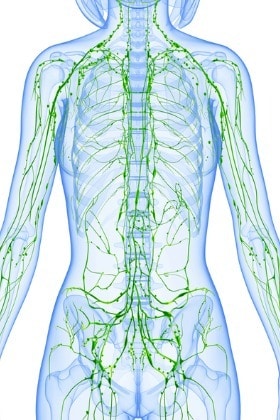
Interferons are made and released by our body’s cells when they get infected with viruses, causing nearby cells to strengthen their anti-viral defenses. Interferons are potent antiviral agents that stop viruses from multiplying.
The lymphatic system is another circulatory system in our body that carries a fluid known as lymph, which removes the waste products of cellular metabolism. The lymphatic system also transports invading bacteria and viruses to lymph nodes where the white blood cells (lymphocytes) destroy them.
Andrographis has been shown to trigger our immune system in two ways:
- Antigen-specific response – specific proteins known as antibodies are made to counteract invading bacteria and viruses.
- Nonspecific immune response – immune cells known as macrophages are produced, which scavenge and destroy invaders.
Andrographis activates both responses, meaning it is very effective against a variety of infectious and cancer-causing agents [8].
Benefits for Upper Respiratory Tract Infections & Cough
Andrographis has been used for many hundreds of years in traditional medicinal systems to treat upper respiratory infections. Modern research supports this.

For example, a 2004 meta-analysis of the results of seven double-blind, controlled trials (with a total of 896 participants) showed that Andrographis offers significant relief from the symptoms of upper respiratory tract infections and may even prevent them from taking hold in the first place.
[Note: A meta-analysis is a quantitative epidemiological study used to systematically assess the results of previous research – typically randomized, controlled clinical trials – to derive overall conclusions about that body of research.]
All the participants in these seven clinical trials reported reduced fever, runny nose, cough, and sore throat on taking Andrographis relative to control patients. Side effects were described as “generally mild and infrequent” [9].
Similarly, another meta-analysis published in 2015 reviewed six randomized controlled clinical trials, which assessed the effects of Andrographis in the treatment of cough.
Combined, these six studies compared 333 patients who took various Andrographis preparations relative to 348 patients in control groups. All of these studies showed that Andrographis preparations reduced cough severity [10].
Andrographis Heals the Gut
As mentioned above, Andrographis has long been used in traditional medicinal systems such as Ayurveda and traditional Chinese medicine (TCM) for treating gut infections.
In a 2013 study published in the American Journal of Gastroenterology, 224 patients with mild to moderate ulcerative colitis were either given 1200 or 1800 milligrams of Andrographis for 8 weeks. Ulcerative colitis is an inflammatory bowel disease that causes long-lasting inflammation and ulcers in the gut, affecting the innermost lining of the large intestine (colon) and rectum.
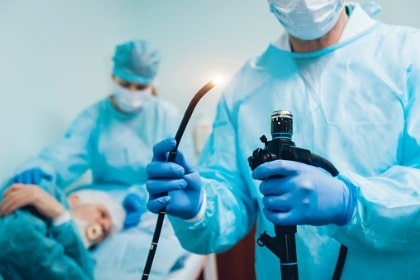
A colonoscopy was performed before the study started and after it ended. Stool frequency and the presence of blood in the stool were also assessed every two weeks.
At the end of the study, 60% of patients who received 1800 mg of Andrographis – relative to 40% of patients in the control group – showed clinical symptoms of healing.
Not only that, 50% of the patients who received the 1800 mg of Andrographis also showed mucosal healing, relative to 33% in the control group [11].
Andrographis & Joint Pain from Arthritis
Arthritis affects more than 70 million Americans, leading to inflammation, pain, and stiffness in the joints and connective tissues. Over time, cartilage breaks down, bones erode, and joints become misshapen [12].

Our modern understanding is that rheumatoid arthritis (RA) happens because of the uncontrolled inflammation that is typical of an autoimmune disease. In such situations, the body’s defense mechanism malfunctions and attacks its own tissues (e.g., healthy joints) for a prolonged period of time.
An immune-signaling protein known as cachexin or tumor necrosis factor-alpha is one of the key drivers of inflammation. Andrographolide has been shown to lower levels of cachexin.
ParActin® and Mild Knee Osteoarthritis
In a randomized, double-blind, placebo-controlled study the efficacy of ParActin® (300 and 600 mg daily) was assessed on pain reduction in 103 patients with mild to moderate knee osteoarthritis [13].
Patients treated with ParActin® showed a significant reduction in pain relative to the control group. Stiffness, physical function, and fatigue all showed a significant improvement with ParActin® treatment.
At the end of the study, quality of life and Functional Assessment of Chronic Illness Therapy (FACIT) scores were significantly better in the ParActin®-treated groups compared to the control group.
ParActin® and Rheumatoid Arthritis
Similarly, in a randomized, double-blind and placebo-controlled study published in the journal Clinical Rheumatology in 2009, 60 individuals with compromised joints were given 100 mg of ParActin® or placebo in conjunction with methotrexate, three times a day for 14 weeks [14]. Methotrexate is proven to improve RA symptoms, but long-term use can cause serious infection and liver damage.

In this study, ParActin® was effective in reducing the number and total grade of swollen joints, the number and total grade of tender joints, as well as improving scores on HAQ-52 (52-week Health Assessment Questionnaire), and SF-36 (36-item short form survey) health questionnaires.
ParActin® treatment was associated with a reduction of various proteins, including enzymes, associated with cartilage damage. Currently, a human clinical trial testing the safety and efficacy of ParActin® in patients with mild to moderate osteoarthritis is ongoing [15].
In other laboratory experiments, ParActin® and Andrographolide have also been shown to support bone [16], cartilage [17], and muscle [18] health and recovery.
Can Andrographis Help Fight Cancer?
Cancer results when our body’s cells grow uncontrollably. When cells develop normally, they become more and more specialized in their function at each stage of development. For example, immature pancreatic cells that will eventually go on to make insulin will develop the cellular machinery to do so as they become mature pancreatic cells.
When cancer happens, it interferes with normal cellular development and cells do not mature. In fact, cancer cells resemble immature body cells – and the more they resemble immature cells, the more likely it is that they will spread to other locations – known as metastasis, often with fatal consequences.
So, it logically follows that if cancer cells can be made to forcibly undergo maturation or differentiation, they will lose the ability to grow uncontrollably. Indeed, in one laboratory study in mice, researchers showed that Andrographis could induce differentiation in leukemia cells [19]. [Note: Leukemia is a cancer of the white blood cells, which are part of the immune system.]

Andrographis can induce differentiation in laboratory conditions – but does this mean it can fight cancer? Indeed, it can – at least under laboratory conditions. A systematic review of no less than 139 pre-clinical and clinical studies shows that Andrographolide has anticancer effects on almost all types of cell lines in laboratory experiments [20].
Specifically, a 2019 study showed that Andrographolide prevented human colon cancer cells in culture from multiplying by inducing a process known as “programmed cell death” or apoptosis. Further, Andrographolide also displayed a combinatorial effect with chemotherapeutic anticancer drugs in these cells under laboratory conditions [21].
Similarly, the results of a 2019 study showed that a hot water extract of Andrographis could stimulate the production of specific components of the immune system and restore others to a more normal state.
Furthermore, the Andrographis extract prevented tumor growth and metastasis in these mice, once again by inducing apoptosis, but without causing severe body weight loss as many anticancer chemotherapy drugs tend to do.
Blood tests detected multiple bioactive Andrographis-derived diterpene compounds, suggesting that more than one might have contributed towards the beneficial effects seen in this study [22].
Andrographis extracts – especially bioactive lactone and diterpene compounds such as Andrographolide in them – have been shown to be very potent in suppressing the growth of various types of cancer cells in laboratory studies. In particular, Andrographolide has been shown to block the growth of human breast, prostate, and hepatoma tumors. It has even successfully been used in cancer chemotherapy [23].
Can Andrographis Help Prevent Alzheimer’s Disease?
As a closing note, Andrographis is even showing promise in helping to combat Alzheimer’s disease. In a 2019 study published in the journal Plants – Basel, researchers reported that three compounds isolated from Andrographis may help stop the formation of structures known as beta-amyloid plaques, which underlie neurotoxicity and dementia, including Alzheimer’s disease [24]. As noted by the researchers “Andrographis paniculata and Spilanthes paniculata are used extensively as medicinal herbs for the treatment of various ailments, and are reported to have neuroprotective properties.”
Turmeric 3D from Organixx provides you one of the most “bioavailable” forms of turmeric due to its unique fermentation process. This means your body experiences the maximum benefits of the purest, most potent turmeric available!
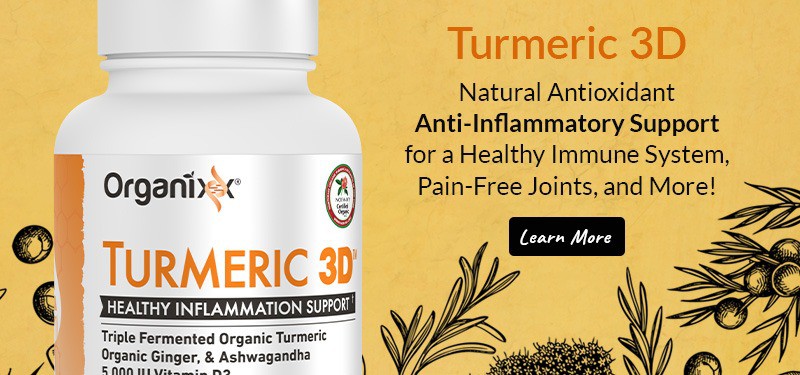
Fun fact… did you know that as members of the kingdom of fungi, mushrooms are more closely related to animals (including people) than they are to plants [1]! This could be one reason why certain types of fungi are so beneficial for human health. One of the best health-promoting mushrooms is turkey tail, which is a beloved medicinal mushroom in both ancient and modern Chinese and Japanese traditions.
Turkey tail mushroom (also known as Trametes versicolor, Coriolus versicolor, and Polyporus versicolor) is so named because of its appearance. The colorful stripes on the outer edge of this frilly mushroom look very much like the tail feathers on a turkey. In Japan, they are known as kawaratake, which means “cloud mushrooms.”

Like maitake mushrooms, turkey tail is a polypore mushroom. What this means is that unlike the typical mushrooms which contain a button cap and gills, turkey tail mushrooms are bracket mushrooms that grow on tree trunks.
Fungi are organisms that absorb their nutrients from decomposing organic matter. Trametes versicolor particularly favor growing on dead trees, branches, and stumps which provide them with the specific growing environment in which they flourish.
Turkey Tail Is an Adaptogen
Turkey tail mushrooms are considered an adaptogen in herbal medicine, which means that they work to balance many aspects of health. They provide support against stressors of all kinds. They are also immunomodulatory, which means that they modulate the function of the immune system.
If the immune system is under-reacting, adaptogens will boost certain aspects of it, and if it is over-reacting, adaptogens help to calm it down. Adaptogens have many other health benefits such as anti-stress, anti-fatigue, anti-depressant, and anti-anxiety, to name just a few [2].
Turkey Tail Is a Common Cancer Therapy in Asia
Medicinal mushrooms such as turkey tail contain polysaccharides called alpha-glucans and beta-glucans. It is the beta-glucans that have been so well-studied and identified as being the primary source of biological activity.

“Polysaccharide” means “many sugars” but they are beneficial sugars bound to protein, and they work in the body in a number of ways. The specifically studied polysaccharides in turkey tail are Polysaccharide-K (PSK), also known by the Krestin, and Polysaccharide-Peptide (PSP).
We have an abundance of studies that show that PSK, used in Asia for cancer patients since the 1970s, stimulates a number of components of the human immune system. It is known as a biological response modifier or BRM.
BRMs have the potential to improve the “host versus tumor response,” which essentially means that they increase the ability of a person with cancer (the “host”) to defend themselves against tumor progression [3]. It has taken years of studying PSK and PSP to validate just some of the ways in which they work in the body.
8 of the Best Health Benefits of Turkey Tail Mushrooms
All backed by research, here are 8 of the best turkey tail mushroom benefits for human health.
#1. Provides Antioxidant Protection
Antioxidants are important because they help to reduce or buffer the damage caused by free radicals and oxidative stress. Free radical damage can compromise the function of otherwise healthy cells, including the DNA.
Over time, free radical damage can increase your risk of developing chronic health problems. By eating plenty of foods rich in antioxidants, however, you can offset damage by free radicals. Turkey tail contain a significant amount of antioxidants. One 2017 study [4] found 38 different antioxidant compounds known as phenols and flavonoids in a sample of Trametes versicolor.
#2. Supports the Immune System
Turkey tail mushrooms are incredibly beneficial for the human immune system. The abundant antioxidants mentioned above act to support the immune system by reducing inflammation and stimulating the release of cytokines (chemical messengers) that are involved in immune system regulation and communication.
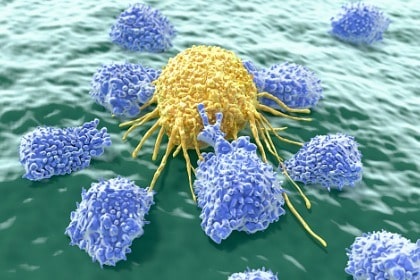
Turkey tail have other immune functions as well. Dendritic cells, the main activators of the immune system are prodded into action. Natural killer cells and lymphocyte-activated killer (LAK) cells are activated, and they scour the body for cancer cells and viruses.
Macrophages, which protect the body against pathogenic (disease-causing) bacteria and other harmful substances are promoted. TNF-a (tumor necrosis factor alpha) and other cytokines are stimulated or inhibited, which regulate the function of immune cells.
As noted above, Trametes versicolor are immunomodulatory, meaning they can dampen down an over-reacting immune system, or boost immunity if it is low [5-8].
#3. Fights Against Pathogenic Bacteria
Turkey tail mushrooms are frequently used to battle infections, including those associated with influenza or the common cold. They can do more than this, however. They are powerful against both gram-positive and gram-negative pathogenic bacteria like golden staph (Staphylococcus aureus), a well-known antibiotic-resistant strain of bacteria currently plaguing hospitals, nursing homes, and other healing environments.

Golden staph likes to live in the upper respiratory tract and on the skin. It is extremely virulent and can result in death if it gets deeper inside the body and is not treated quickly enough.
Salmonella enteritidis is a gram-negative pathogen which turkey tail can also help to eradicate. [9]. This bug, caused by eating contaminated food, can make you feel absolutely rotten. Symptoms include stomach cramps, diarrhea, bloody stools, fever, chills, headache, and vomiting.
Turkey tail is effective because of its abundance of antioxidants and polysaccharides, which link up with the proteins and cell walls of bacteria, disrupting microbial membranes and inhibiting energy metabolism in the bacteria. This effectively creates havoc for the pathogen and kills it [9].
#4. Defends Against Abnormal Cell Growth
Turkey tail mushrooms are well-studied for their anti-cancer effects. In fact, they have been utilized in Asia since the 1970s for use with cancer patients. Studies show that they have the following anti-cancer effects:
- promoting apoptosis (programmed cell death, a process absent in cancer cells) and inhibiting tumor growth [6]
- inhibiting enzymes known as metalloproteinases involved in the metastasis (spread) of cancer cells [10]
- may protect tissues from the toxicity of chemotherapy and radiation, and may also help prevent second malignancies due to the carcinogenic effects of radiotherapy and chemotherapy [5]
- as an adjuvant to chemotherapy, improving both survival and disease-free survival of patients with cancer [7]
- may inhibit carcinogenesis (the rise of cancer) by inhibiting the action of carcinogens (cancer-causing agents) on vulnerable cells [5]
- working synergistically with chemotherapy drugs to increase their cancer-killing effect [6]
- protecting tissues against the toxic effects of radiation [6]
One Woman’s Experience with Turkey Tail Mushrooms
One 2012 study [11] discussed the experience of an 83-year-old woman diagnosed with Stage 4 inflammatory breast cancer. She was considered too old for a mastectomy or radiation and given only three months to live. She had a remarkable result with Trametes versicolor.
Combined with chemotherapy, the turkey tail boosted her immune system and increased the effectiveness of the chemotherapy. The patient was still alive and disease-free five years later.
Other Notable Research Studies for Turkey Tail Mushroom and Cancer
A small 2012 clinical trial [12] involving 11 participants with breast cancer found that turkey tail had a significant effect on key components of their immune system. It increased white blood cells, natural killer cells, CD8 T-cells, and CD19 B-cells. Researchers in this study noted that up to 9 grams (9,000 mg) of Trametes versicolor per day was well tolerated.
A 2017 meta-analysis of 23 clinical trials [13] involving 10,684 patients with gastrointestinal cancer found that polysaccharide K (PSK) treatment significantly increased the overall survival of the patients in years one through five, and even beyond that. They also found that there were significant increases in disease-free survival from years one through seven, with no side effects.
IMPORTANT NOTE: While it is not suggested to try and heal cancer using turkey tail mushroom alone, when used in combination with other therapies it may prove beneficial for cancer patients. If you have cancer, or suspect that you do, always consult with a qualified physician for appropriate treatment.
#5. Inhibits Viruses
Several studies have found that PSK has anti-viral action. It has been used for its ability to inhibit HIV (human immunodeficiency virus, the virus associated with AIDS) [14]. Turkey tail mushroom has also been found to be beneficial for HPV (human papillomavirus, a sexually-transmitted infection) in preliminary clinical trials [15].
#6. Promotes Beneficial Gut Bacteria
The importance of prebiotics and gut health has come to the forefront over the past several years. As a reminder, prebiotics act as “food” for probiotics – the beneficial gut bacteria that help to keep us well.
Prebiotics modulate the human gut microbiome and help inhibit several health conditions including diabetes, obesity, and cancer. Mushrooms are especially beneficial for helping to improve the microbiome of the gut as they are super-special prebiotics [16-18].
#7. May Improve Athletic Performance
Despite a lack of studies on Trametes versicolor and athletic performance, many athletes and people who demand a lot out of their bodies are reporting that supplementing with turkey tail helps them, over time, to improve energy levels and to bounce back from rigorous exercise more easily.
One preliminary animal study reported that turkey tail mushroom “has beneficial effects on performance improvement and anti-fatigue activity, and thus has great potential… [19]”
#8. Improves Insulin Resistance
Medicinal mushrooms have been studied for the various modes of action they have with regard to protecting against diabetes. They seem to act in several different ways, including inhibiting the absorption of glucose (sugar), protection of the beta cells of the pancreas, promotion of insulin release, enhancement of antioxidants, countering inflammation, and modulation of various metabolic pathways that involve the control of glucose in and out of cells.
Turkey tail mushrooms have been investigated for their anti-diabetic properties and effects on insulin-resistant cells in animal studies. In two studies [20, 21] researchers found that turkey tail significantly reduced blood glucose levels and influenced enzymes and genes associated with development of diabetes and insulin resistance. Hopefully human trials will follow.
Look-Alike Mushrooms Are Not the Same as Turkey Tail
Be aware that there are mushrooms that look quite similar to turkey tail. They are even called “false turkey tail” (botanical name Stereum ostrea). Also referred to as “golden curtain crust,” these are look-alike mushrooms, but they do not have the same therapeutic properties as Trametes versicolor. They tend to be a little more reddish in color than turkey tail. They do contain some therapeutic compounds but should not be confused with true turkey tail.
It is always a good idea to purchase your turkey tail mushrooms and extracts from a trusted organic grower/supplier who tests for quality and purity in their products.
7 Mushrooms from Organixx contains 7 of nature’s most powerful mushrooms for anti-aging, longevity, and immune support. Using centuries-old knowledge of the power of nutritional mushrooms and our breakthrough new formulation process we’ve unleashed the power of mushrooms in a way never before done.

“First best is falling in love. Second best is being in love. Least best is falling out of love. But any of it is better than never having been in love.”
Maya Angelou
As Valentine’s Day approaches you may be giving more thought than usual to how to fall in love with someone… or in the case of long-term relationships, how to fall back in love?
If you’ve been in a relationship for a while, you likely know that keeping the “fire going” can sometimes be a challenge in the midst of work, kids, errands, responsibilities, and everything that makes up our busy lives. And what about new relationships? With all the distractions of our modern-day digital addictions, finding true connection seems harder than ever these days.
But what if you could rekindle that spark with your sweetie (or potential sweetie) within minutes? Here are two ways to fall in love that research has proven really work!
Method #1 – 36 Questions to Fall in Love & Create Greater Intimacy
Long-time researcher and psychologist Arthur Aron fell head over heels in love with his now-wife of over 50 years, Elaine Aron [1] (author of The Highly Sensitive Person, 2013 by Kensington Publishing Corp.), on a grassy lawn on the Berkeley campus in 1967.
The instantaneous experience, spurred on by an innocent kiss, had a profound effect on Arthur Aron, who at the time was a graduate student studying social psychology.
“I fell in love very intensely,” Aron told reporters for Berkeley Daily in 2015, where he was a visiting professor at the time (he is also a research professor at Stony Brook University in New York) [2]. “Given that I was studying social psychology, just for fun I looked for the research on love, but there was almost none.”
So Aron decided to dive in and, as a result, wound up devoting the rest of his life to researching the “mysteries of attraction and intimacy.”
Not a bad gig, right? The result has been some very insightful research over the past few decades [3]. Along with Dr. Elaine Aron, Arthur Aron has developed 36 questions that are guaranteed to bring you closer not only to your partner but other loved ones and even complete strangers.

“One key pattern associated with the development of a close relationship is sustained, escalating, reciprocal, personal, self-disclosure,” writes Aron.
The “36 Questions that Lead to Love” have gotten a lot of attention over the last several years. They have been featured in New York Times columnist Mandy Len Cantron’s Modern Love column [4], in numerous Ted talks and in a 2015 segment of the Today Show.
Curious about what kind of questions can lead to love? The complete list of open-ending questions comes in three subject sets of 12 questions each that get increasingly intense and intimate as they go along. Here is just a sampling of a few of the love questions [5] :
Set I
- Given the choice of anyone in the world, who would you want as a dinner guest?
- What would constitute a perfect day for you?
- For what in your life do you feel most grateful?
Set II

- Is there something you have dreamed of doing for a long time? Why haven’t you done it?
- What is your most treasured memory?
- If you knew that in one year, you would die suddenly, would you change anything about the way you are now living?
Set III
- Complete this sentence: “I wish I had someone with whom I could share…”
- When did you last cry in front of another person? By yourself?
- Tell your partner something that you like about them already.
Method #2 – What’s Behind Those Eyes? The Power of Eye Gazing
Another powerful practice for gaining more of a sense of intimacy and closeness with a partner (or, according to the research, just about anyone) involves not talking at all.
Eye gazing is as simple as it sounds: it is the act of gazing into another person’s eyes for a specific period of time, usually 2 to 4 minutes. The effect it can have on a person’s emotional and sometimes even physical well-being can be profound, however.

How can the simple act of eye contact make partners feel closer, strangers seem like best friends, and pets bond more with their humans?
Eye gazing is powerful for humans (and other mammals, such as dogs) in part because of how eye contact in itself can affect us. As award-winning author Paulo Coelho says, “No one can lie, no one can hide anything, when he looks directly into someone’s eyes [6].”
The most well-known investigation on the subject was conducted in 2015 by Italian psychologist and researcher Giovanni Caputo [7]. He found that prolonged eye-gazing alone can produce a marked altered state of consciousness without drugs.
Another study at Kyoto University in Japan [8] studied the responses of volunteers who either made eye contact or looked away while playing word association games at the same time. Even while “viewing a movie of faces with eyes directed toward the viewer,” the study participants had a harder time associating simple words than when looking away.
“Although eye contact and verbal processing appear independent, people frequently avert their eyes from interlocutors during conversation,” the Kyoto researchers wrote. “This suggests that there is interference between these processes.”
The Japanese researchers also concluded that eye contact uses particular cognitive pathways that spoken word and mental thought also use. As a side note: the next time your partner or child looks away from you when you are talking to them, give them a break. They may not be trying to be rude. Their “cognitive system” may just be overloaded.
But what about the deep emotions that sometimes come up when gazing into another person’s eyes? The truth is, we all need eye contact as part of a more general mammalian need for social and emotional connection [9].

Babies need eye contact to maintain healthy neurological development [10]. As adults, eye contact with romantic partners cultivates sensual energy.
Eye contact with other intimates, such as pets, children, or other family members and even with complete strangers, can produce feel-good, healing hormones, especially oxytocin [11], often called the “love hormone.”
When the need to be acknowledged in this way gets filled, especially after an absence of such contact, the flood of feel-good hormones can be perceived as a deeply personal, profound, and even spiritual experience.
Eye Gazing: How You Can Do It
Want to give eye-gazing a try for yourself? Here are a few guidelines to get you started:
- You can practice eye-gazing with anyone, even a stranger (if they’re willing). Many yoga studios and retreats now offer classes and workshops in “soul gazing.” Whether you want to begin with someone familiar or a person you don’t know is entirely up to you. Some people may be more comfortable starting out with a stranger, while others will feel more at ease with familiars. If you are just starting out, begin with the situation that you feel most comfortable with overall. Guaranteed, it will probably feel a little weird at first no matter how you do it. Your uneasiness will dissipate the more you practice, however.
- You can also practice eye-gazing alone. When you go solo, it is usually done while facing a mirror. In fact, the first study Caputo did on the subject was with single individuals gazing at themselves in the mirror [12]. The effects in terms of emotion and visions produced were just as profound.
- Whether you’re practicing soul-gazing alone, with a stranger or with someone you know, be sure to prepare the right physical environment for the experience. Make sure you are in a quiet, calm place; turn off all cell phones and other electronic devices that may disturb you. Tell others around you in the house or office that you wish to remain uninterrupted for however long you plan on “gazing” and be sure to plan a little extra time for discussing the experience or writing down your thoughts in a journal afterward. The lights in the room should be dim, i.e. bright enough to see the other person’s face or your own, but not bright enough to see too much detail.
- Prepare yourself mentally as well. You want to be as centered yet as open as possible when you engage in the practice. Take a few minutes to do some breathing, meditation, or stretches beforehand. Set aside the busy-ness of the day and allow yourself to simply “be” while gazing at the other or your own reflection in the mirror.
- Finally, don’t judge. As long as you remain fixed on the other persons’ eyes or your own, you really can’t get this practice wrong. Every experience and emotion that may come up, even if your thoughts wander or you feel nothing at all, is “grist for the mill” and can be part of the learning experience.

If you need a little more direction, try this: some eye-gazing guides suggested gazing at the left eye, which is said to be a pathway to “yin” energy and the creative mind. Others recommend using the time to gaze at the other as well as notice other occurrences that may be going on in and around you at the same time. The breeze on your skin or the sound of a dog barking in the distance, for instance.
Eye Gazing Benefits
This practice of eye gazing cultivates “open focus” and is said to elicit the lowering of brain waves from beta (where the analytical mind resides) to the more imaginative space of alpha and theta. These lower brain wave states are also where creativity and physical healing can take place [13].
The sense of intense emotion, connection, vulnerability and insight that can happen with Arthur Aron’s “36 Questions That Lead to Love” as well as in the ancient practice of eye-gazing are part of the beauty of opening up with a partner, sharing experiences, and being vulnerable. This is the case no matter how long you have been together… so give either one or both of these ways to fall in love a try. If you do, we’d “love” to hear about your experience in the comments section below.
The powerhouse trio of herbs in Magi-Complexx Essential Oil provides the strongest, most synergistic healing effect, helping sufferers of arthritis pain, constant muscle aches and pains, neuropathy, systemic inflammation, slowed wound healing, circulatory challenges, as well as skin irritations like eczema, psoriasis, and acne.
